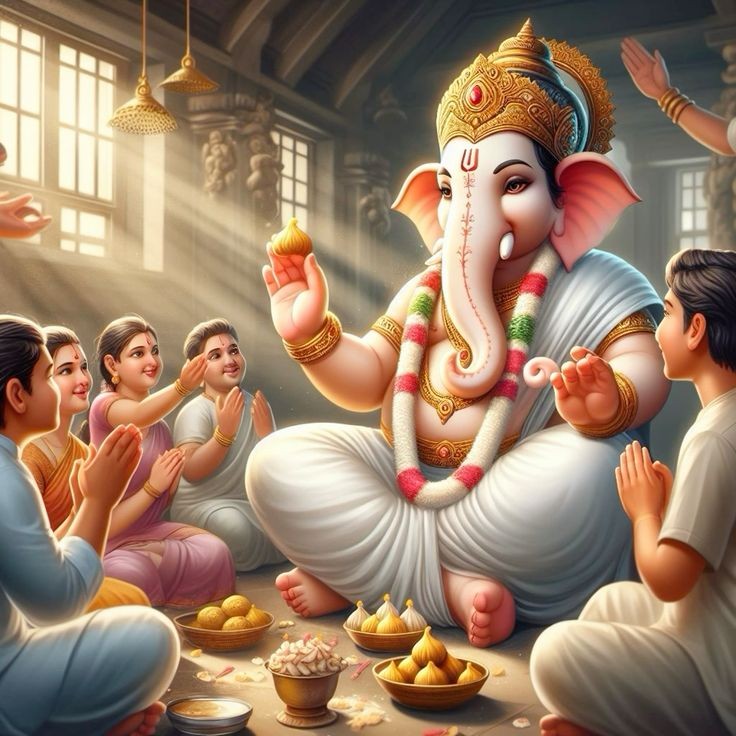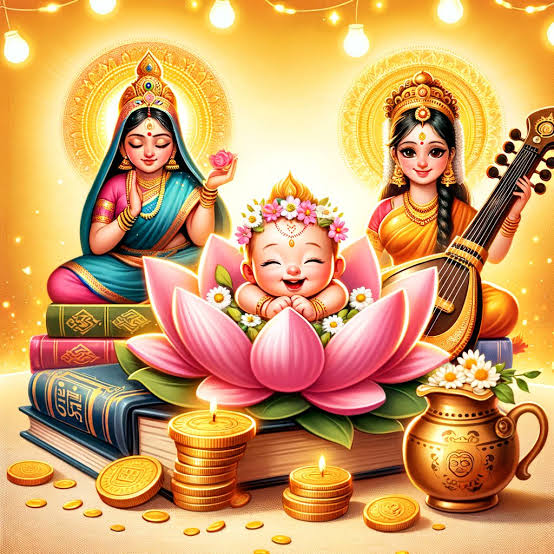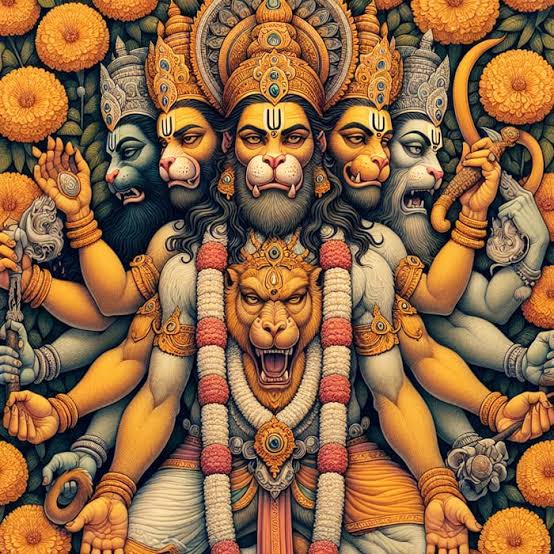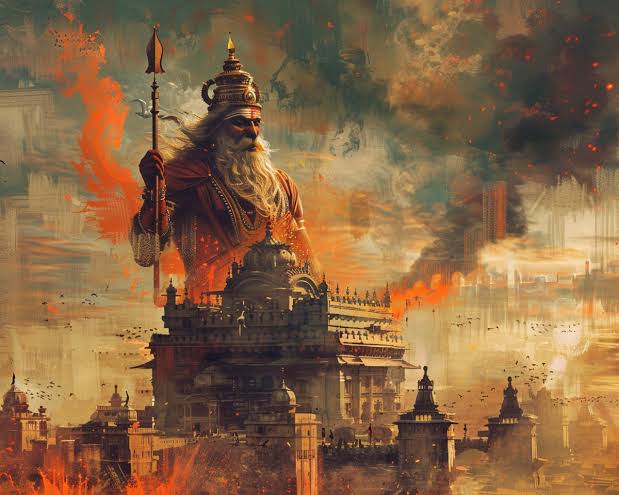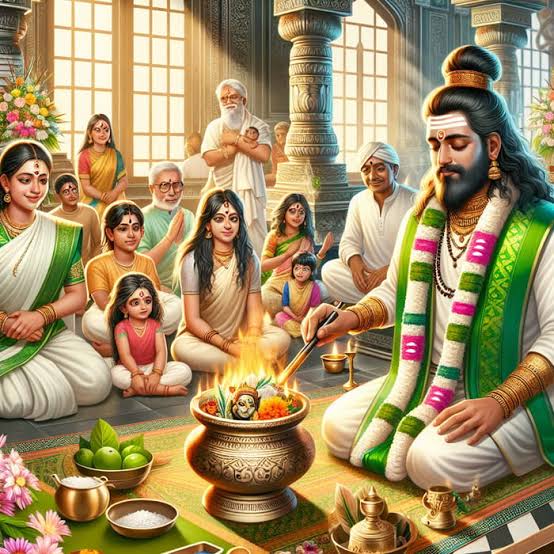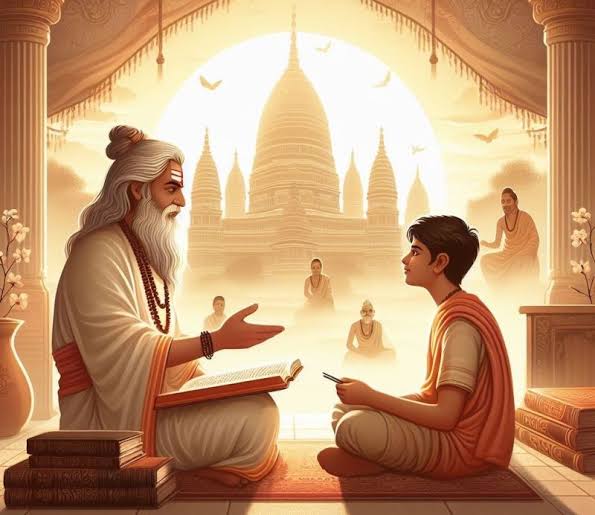भाग्य प्रदायक स्वास्तिक चिन्ह (Hindi & English)

Om-Shiva
01. स्वास्तिक चिन्ह का महत्व और परिचय?
सनातन हिंदू धर्म में स्वास्तिक का बहुत ही बड़ा महत्व माना जाता है। सनातनी हिंदूजन किसी भी शुभ कार्य को शुरू करने से पहले शुभ स्वास्तिक का चिन्ह बनाकर उसकी पूजा करते हैं। क्योंकि ऐसी हमारी प्राचीन वैदिक मान्यता है कि ऐसा करने मात्र से कार्य सफल हो जाता है। स्वास्तिक के चिन्ह को मंगल का प्रतीक माना जाता है। स्वास्तिक शब्द को ‘सु’ और ‘अस्ति’ का मिश्रण योग माना गया है। ‘सु’ का अर्थ है शुभ और ‘अस्ति’ का अर्थ है होना। इसका मतलब स्वास्तिक का मौलिक अर्थ है ‘शुभ हो’ या ‘कल्याण हो’। आइए अब हम जानते हैं कि, आखिर क्या है स्वास्तिक की कहानी? और कैसे शिव-पार्वती के पुत्र भगवान श्री गणेशजी से जुड़ा है इसका रहस्य?

02. स्वास्तिक का अर्थ?
स्वास्तिक का अर्थ होता है कल्याण या मंगल। इसी प्रकार स्वास्तिक चिन्ह का अर्थ हो जाता है कल्याण या मंगल करने वाला। स्वास्तिक अपने आप में एक विशेष तरह की आकृति है, जिसे किसी भी कार्य को आरंभ करने से पहले बनाया जाता है। ऐसा माना जाता है कि यह शुभ चिन्ह दसों दिशाओं से शुभता और मंगलता से पूर्ण चीजों को अपनी तरफ आकर्षित करता है। जिससे सर्वकल्याण एवम सर्वलाभ होता है। चूंकि स्वास्तिक को कार्य की शुरुआत और मंगल कार्य में रखते हैं, अतः यह भगवान् श्रीगणेश का रूप भी माना जाता है। ऐसा दृढ़तापूर्वक माना जाता है कि इसका प्रयोग करने से जातक को सम्पन्नता, समृद्धि, शुभता और एकाग्रता की प्राप्ति होती है। इतना ही नहीं जिस किसी पूजा उपासना में स्वास्तिक का प्रयोग नहीं किया जाता है वह पूजा लम्बे समय तक अपना प्रभाव नहीं रख पाती है। क्योंकि हमारी संस्कृति में अगर शुरुआत ही शुभ होगी तो कार्य भी जल्दी पूर्ण होगा और अपनी पूर्णता पश्चात कार्य समृद्धि भी प्रदान करेगा।

03. स्वास्तिक चिन्ह का वैज्ञानिक महत्व?
01. यदि आपने स्वास्तिक के चिन्ह को पूर्ण श्रद्धा एवम सही ढंग से बनाया हुआ है तो उसमें से ढेर सारी सकारात्मक उर्जा हर क्षण निकलती रहती है।
02. यह पवित्र उर्जा वस्तु या व्यक्ति की रक्षा करने में मददगार सिद्ध होती है, जिससे जातक को अपने कार्य के सिद्ध होने में कोई संशय नहीं रहता है।

03. स्वास्तिक की शुभ उर्जा को अगर घर, अस्पताल या दैनिक जीवन में प्रयोग किया जाएगा तो व्यक्ति रोगमुक्त और चिंता मुक्त रह सकता है। क्योंकि एक सही विद्धिबाई बनाया गया स्वास्तिक हर प्रकार की नकरात्मक ऊर्जा को हराने की क्षमता रखता है।
04. गलत तरीके से बनाया गया या प्रयोग किया गया स्वास्तिक चिन्ह भयंकर समस्याएं भी पैदा कर सकता है। क्योंकि एक सही विधि से बनाया गया स्वास्तिक ही शुभ ऊर्जा प्रदान करता है। इसलिए अज्ञानता से बनाया गया यही शुभ चिन्ह विषम परिणाम भी से सकता है। आइए अब जानते हैं सुख-समृद्धि हेतु स्वास्तिक चिन्ह के 07 दिव्य प्रयोग।
सुख-समृद्धि हेतु स्वास्तिक चिन्ह के 07 दिव्य प्रयोग।

01. पूर्ण परिवार की बरकत हेतु 21 पीपल के पत्तों पर कपूर के तेल और हल्दी से स्वास्तिक बनाइए और लाल मोली से सभी पत्तों को जोड़ते हुए उसका तोरण बनाकर घर के मुख्य लकड़ी वाले दरवाज़े पर लगाएं। यह उपाय प्रत्येक पूर्णमासी को ही शुरू करना है और नया तोरण भी पूर्णमासी तिथि को ही लगाना है।

02. अगर आपके घर/ऑफिस के उत्तर-पूर्वी(ईशान कोण) कोने में मंदिर है तो उत्तर और पूर्वी दीवार पर गंगाजल छिडक़ कर हल्दी, कुमकुम और गुड़ मिलाकर से 11 गुरुवार लगातार स्वास्तिक बनाएं। यह उपाय घर/ऑफिस में धन प्रवाह उत्तम रखेगा। यह उपाय किसी भी गुरुवार से शुरू करें और पहले गुरुवार बनाए हुए स्वास्तिकों पर ही दूसरा बनाते रहें।

03. कार्यों में किसी भी प्रकार से विलंब आ रहा है तो प्रसन्न भारतीय देशी गौमाता जिसका स्वस्थ बछड़ा हो उनके गोबर धन में चंदन का चूरा मिलाकर घर के मुख्य लोहे+लकड़ी वाले द्वार के दोनों तरफ स्वास्तिक का निर्माण करें। अगर कोई गंभीर समस्या भी चल रही है तो इन्हीं गौमाता के बछड़े को गुड़ खिलाएं और गौमाता के सीधे कान में अपनी परेशानी बताते हुए उनका आशीर्वाद ग्रहण करें।

04. लक्ष्मीजी के उत्तम आगमन हेतु घर/ऑफिस के ठीक सामने या देहलीज के दोनों तरफ जहां किसी के भी पैर नहीं पड़ते हों वहां प्रसन्न भारतीय देशी गौमाता जिसका स्वस्थ बछड़ा हो उनके गोबर धन में हल्दी मिलाकर दो स्वास्तिक बनाएं। इन स्वास्तिक देव को अक्षत, सुपारी, मौली और दक्षिणा अर्पण करें। नित्य इन्हें प्रणाम करें। यह उपाय पूर्णमासी से ही शुरू करें और आजीवन पूर्णमासी करते ही रहें। पुराने स्वास्तिक की सफाई हेतु केवल स्वच्छ अवस्था में अपने हाथों का ही प्रयोग करें।

05. पति-पत्नी के आपसी प्रेम और एकता हेतु घर के मंदिर में पीतल की एक प्लेट पर कुमकुम+हल्दी से एक स्वास्तिक का निर्माण करें। इन स्वास्तिक देव पर शिव-परिवार या शिवलिंग को स्थान दें। नित्य देशी खांड मिश्रित जल से इन्हें स्नान कराएं और अक्षत अर्पण करें। स्नान वाले जल को किसी भी पौधे में अर्पण करें। यह उपाय सोमवार से शुरू करें और प्रत्येक सोमवार को नया स्वास्तिक बनाया करें।

06. धन-धान्य एवम् संपन्नता हेतु हर पूर्णमासी से पहले अपनी रसोई की पूर्ण सफाई अवश्य करें। पूर्णमासी की तिथि में प्रातः समय अपनी रसोई में हल्दी से मां अन्नपूर्णा का ध्यान करते हुए स्वास्तिक का निर्माण करें। स्वास्तिक के बीच में एक मिट्टी का देशी घी का दीपक जलाएं और साबुत हल्दी+अक्षत+गेहूं+दाल+गुड़ अर्पण करें। यह उपाय जितना अधिक करेंगे उतना ही अधिक लाभ होगा।

07. जीवन को एक दिशा प्रदान करने के लिए घर के ईशान कोण के मंदिर में एक पीतल के कलश मे गंगाजल भरकर रखिए। इस पीतल के कलश पर कुमकुम/हल्दी से चौतरफा स्वास्तिक बनाएं। इस पीतल के कलश पर पीतल की ही प्लेट/ढक्कन लगा कर रखें रहें। यह कलश आजीवन रखा ही रहेगा।

-गुरु सत्यराम
++++++++++++++++++++++++++++++++++++++
Swastik symbol that provides luck (Hindi & English)

Om-Shiva
01. Importance and introduction of Swastik symbol?
Swastik is considered to be of great importance in Sanatan Hindu religion. Before starting any auspicious work, Sanatani Hindus make a sign of auspicious Swastik and worship it. Because it is our ancient Vedic belief that by doing this, the work becomes successful. Swastik symbol is considered to be a symbol of auspiciousness. The word Swastik is considered to be a mixture of ‘Su’ and ‘Asti’. ‘Su’ means auspicious and ‘Asti’ means to be. This means that the basic meaning of Swastik is ‘May it be auspicious’ or ‘May it be good’. Let us now know, what is the story of Swastik? And how is its mystery connected to Lord Shri Ganeshji, son of Shiva-Parvati?

02. Meaning of Swastik?
Swastik means welfare or auspiciousness. Similarly, the Swastik symbol means welfare or auspiciousness. Swastik is a special kind of figure in itself, which is made before starting any work. It is believed that this auspicious symbol attracts auspicious and auspicious things from all the ten directions. Which leads to welfare and benefit for all. Since Swastik is kept at the beginning of work and auspicious work, it is also considered to be a form of Lord Shri Ganesha. It is strongly believed that by using it, the person gets prosperity, prosperity, auspiciousness and concentration. Not only this, the worship in which Swastik is not used, that worship is not able to keep its effect for a long time. Because in our culture, if the beginning is auspicious, then the work will also be completed quickly and after its completion, the work will also provide prosperity.

03. Scientific importance of Swastik symbol?
01. If you have made the Swastik symbol with full faith and in the right way, then a lot of positive energy keeps coming out of it every moment.
02. This holy energy proves to be helpful in protecting the object or person, due to which the person does not have any doubt in the accomplishment of his work.

03. If the auspicious energy of Swastik is used in home, hospital or daily life, then the person can remain disease free and worry free. Because a Swastik made correctly has the ability to defeat all types of negative energy.
04. Swastik symbol made or used in the wrong way can also create terrible problems. Because only a Swastik made in the right way provides auspicious energy. Therefore, this auspicious symbol made out of ignorance can also give adverse results. Let us now know 07 divine uses of Swastik symbol for happiness and prosperity.
07 divine uses of Swastik symbol for happiness and prosperity.

01. For the prosperity of the entire family, make a Swastik on 21 Peepal leaves with camphor oil and turmeric and join all the leaves with red moli to make a toran and place it on the main wooden door of the house. This remedy has to be started on every Poornamasi (full moon day) and a new toran should also be placed on the Poornamasi (full moon day) date.

02. If there is a temple in the north-eastern (Ishaan Kon) corner of your house/office, then sprinkle Gangajal on the north and eastern wall and make a Swastik by mixing turmeric, kumkum and jaggery for 11 consecutive Thursdays. This remedy will keep the money flow in the house/office good. Start this remedy from any Thursday and keep making the second Swastik on the same lines as the one made on the first Thursday.

03. If there is any kind of delay in work, then mix sandalwood powder in the dung of a happy Indian cow who has a healthy calf and make a Swastik on both sides of the main iron + wooden door of the house. If there is any serious problem, then feed jaggery to the calf of this cow and tell your problem in the right ear of the cow and take her blessings.

04. For the good arrival of Goddess Lakshmi, mix turmeric in the dung of a happy Indian cow who has a healthy calf and make two Swastiks right in front of the house / office or on both sides of the threshold where no one’s feet fall. Offer rice, betel nut, mauli and dakshina to this Swastik Dev. Salute him daily. Start this remedy from the full moon day and keep doing it on full moon day throughout the life. Use only your hands in clean state for cleaning the old Swastik.

05. For mutual love and unity between husband and wife, make a Swastika with Kumkum + Turmeric on a brass plate in the temple of the house. Place Shiv-family or Shivling on this Swastik Dev. Bathe them with water mixed with pure sugar candy every day and offer rice. Offer the bathing water to any plant. Start this remedy from Monday and make a new Swastika every Monday.

06. For wealth and prosperity, clean your kitchen completely before every full moon day. On the full moon day, make a Swastika with turmeric in your kitchen in the morning while meditating on Mother Annapurna. Light an earthen lamp of pure ghee in the middle of the Swastik and offer whole turmeric + rice + wheat + lentils + jaggery. The more you do this remedy, the more benefits you will get.

07. To give direction to life, keep a brass urn filled with Gangajal in the temple in the northeast corner of the house. Make a four-sided Swastika on this brass urn with kumkum/turmeric. Keep a brass plate/lid on this brass urn. This urn will be kept for life.

-Guru Satyaram








